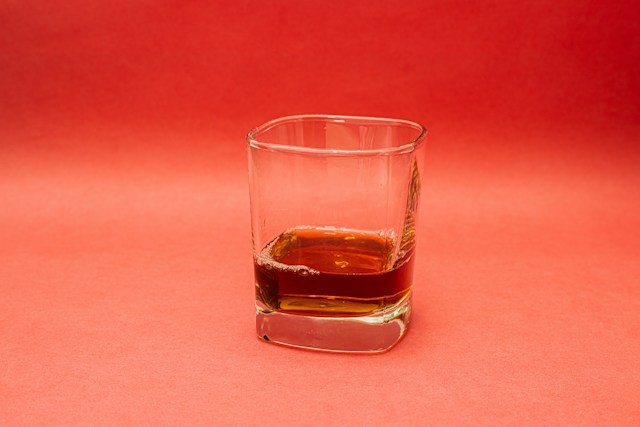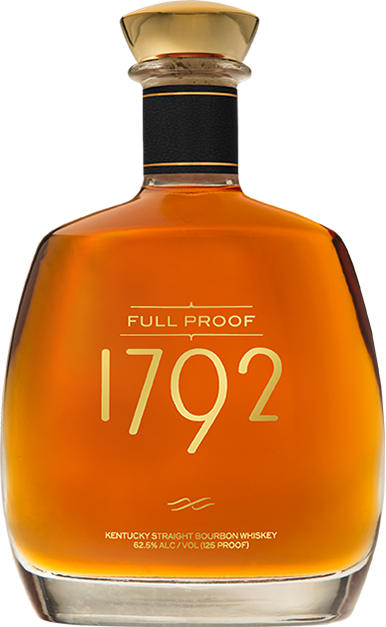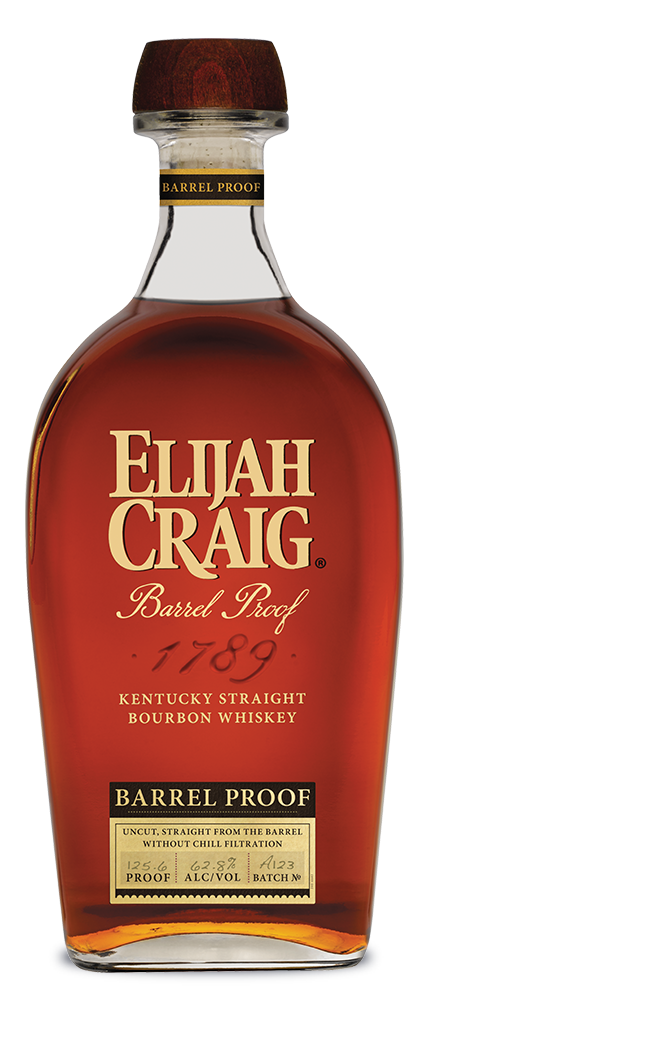
Are you a whiskey enthusiast who’s confused about the difference between full proof and barrel proof? If so, you’re not alone. Many people assume that these two terms are interchangeable, but they actually have distinct meanings that can significantly impact the flavor and strength of your favorite whiskey.
Understanding the difference between full proof and barrel proof can help you make more informed decisions about which whiskeys to try and how to enjoy them. Whether you prefer a smoother, more mellow flavor or a bolder, more intense one, there’s a whiskey out there that’s perfect for you. So why not explore the world of full proof and barrel proof whiskeys today and discover your new favorite?
Table of Contents
Facts About Full Proof
 photo credit: 1792bourbon.com
photo credit: 1792bourbon.com
History of Full Proof
Full Proof is a term that has been used in the bourbon industry for many years. It refers to the proof of the whiskey when it first enters the barrel. In the past, distillers would add water to the barrel to bring down the proof to a consistent level. However, this process was not always accurate, and sometimes the proof would vary from barrel to barrel. To ensure consistency, distillers started using the term “Full Proof” to indicate the proof of the whiskey when it first enters the barrel.
How Is Full Proof Made?
To make Full Proof, a distiller will add water to the barrel until the proof of the whiskey returns to its original level, making for a consistent process. This is done to ensure that the whiskey will have the same alcohol content in each barrel, which is important for consistency in flavor and quality.
Types of Full Proof
There are different types of Full Proof, including Single Barrel, Small Batch, and Bottled in Bond. Single Barrel Full Proof bourbon is bottled from one barrel, which means that each bottle will have a unique flavor profile. Small Batch Full Proof bourbon is a combination of several barrels, which creates a more consistent flavor profile. Bottled in Bond Full Proof bourbon is made according to strict regulations set by the US government, including being aged for at least four years and bottled at 100 proof.
Price Range of Full Proof
The price range of Full Proof bourbon varies depending on the type and brand. Single Barrel Full Proof bourbon is usually more expensive than Small Batch Full Proof bourbon, with prices ranging from $50 to $150 per bottle. Small Batch Full Proof bourbon is more affordable, with prices ranging from $30 to $60 per bottle. Bottled in Bond Full Proof bourbon is also more affordable, with prices ranging from $20 to $50 per bottle.
Notable Brands of Full Proof
Some notable brands of Full Proof bourbon include Elijah Craig, Old Forester, and Wild Turkey. Elijah Craig Full Proof bourbon is a Single Barrel bourbon that is aged for 12 years and bottled at 133.2 proof. Old Forester Full Proof bourbon is a Small Batch bourbon that is bottled at 125 proof. Wild Turkey Full Proof bourbon is a Bottled in Bond bourbon that is aged for at least six years and bottled at 100 proof.
Facts About Barrel Proof
 photo credit: heavenhilldistillery.com
photo credit: heavenhilldistillery.com
History of Barrel Proof
Barrel proof whiskey has been around for centuries. In the early days of whiskey production, whiskey was typically bottled at cask strength, which is the strength of the whiskey when it comes out of the barrel. This meant that the alcohol content of the whiskey could vary widely from bottle to bottle.
Over time, distillers began to dilute the whiskey with water to bring it down to a consistent proof. However, some distillers continued to bottle their whiskey at cask strength, and this is what we now refer to as barrel proof.
How Is Barrel Proof Made?
Barrel proof whiskey is made in the same way as any other whiskey. The difference is that it’s not diluted with water before bottling. This means that the whiskey retains its original alcohol content, which is typically between 120 and 140 proof.
Types of Barrel Proof
There are several types of barrel proof whiskey, including bourbon, rye, and scotch. Each type has its own unique flavor profile, and the alcohol content can vary depending on the specific brand and batch.
Price Range of Barrel Proof
Barrel proof whiskey is typically more expensive than other types of whiskey. This is because it’s not diluted with water, which means that you’re getting more whiskey per bottle. Prices can range from $50 to $500 or more, depending on the brand and age of the whiskey.
Notable Brands of Barrel Proof
Some notable brands of barrel proof whiskey include Elijah Craig, Stagg Jr., Booker’s, and George T. Stagg. Each of these brands has its own unique flavor profile and is highly sought-after by whiskey enthusiasts.
Full Proof vs Barrel Proof
When it comes to whiskey, there are different ways to measure its strength or proof. Two of the most common terms used are full proof and barrel proof. Understanding the differences between the two can help you choose the right whiskey for your taste and occasion.
Differences in Flavor
The main difference between full proof and barrel proof whiskey is the alcohol content. Full proof whiskey is typically bottled at exactly 80% ABV, while barrel proof whiskey can vary widely in strength, typically falling between 57% and 75% ABV. This means that barrel proof whiskey has a higher alcohol content than full proof whiskey.
Due to its higher alcohol content, barrel proof whiskey tends to have a stronger and more intense flavor than full proof whiskey. It also tends to have a more complex flavor profile, with notes of oak, vanilla, and caramel being more pronounced. Full proof whiskey, on the other hand, tends to have a smoother and more mellow flavor with less of a burn on the finish.
Differences in Serving and Pairing
When it comes to serving and pairing, full proof and barrel proof whiskey can be enjoyed in different ways. Full proof whiskey is often served neat or on the rocks, as its lower alcohol content makes it more suitable for sipping. It also pairs well with lighter dishes such as grilled fish or chicken, as well as desserts such as apple pie or crème brûlée.
Barrel proof whiskey, on the other hand, is often served with a splash of water or a large ice cube, as its higher alcohol content can be overwhelming when consumed neat. It pairs well with heavier dishes such as steak or barbecue, as well as strong cheeses or dark chocolate.
Conclusion
Understanding the difference between Full Proof and Barrel Proof is essential for any bourbon enthusiast. Full Proof refers to the alcohol content of the bourbon when it enters the barrel. On the other hand, Barrel Proof is the alcohol content of the bourbon when it is bottled without any water added to the final product.
Regardless of your preference, it’s always a good idea to experiment with different types of bourbon and find what works best for you. Remember to enjoy your bourbon responsibly and savor every sip.
Related Posts
If you’re interested in learning more about the world of whiskey, check out these related posts:
- Battle of the Bourbons: Buffalo Trace vs Eagle Rare: This post explores the differences between Buffalo Trace Bourbon and Eagle Rare Bourbon, two popular bourbons produced by the Buffalo Trace Distillery.
- Uncle Nearest 1884 vs 1856: Which One Should You Try?: If you’re a fan of Uncle Nearest whiskey, this post compares two of their most popular expressions, the 1856 and 1884.
- Jack Daniel’s vs Jim Beam: Which Whiskey Reigns Supreme?: This post pits two iconic American whiskey brands, Jack Daniel’s and Jim Beam, against each other to see which one comes out on top.
- Rum vs Whiskey: What’s the Difference?: If you’re curious about the differences between rum and whiskey, this post breaks down the distinctions between these two beloved spirits.
- Brandy vs Whiskey: What’s the Difference?: This post explores the differences between brandy and whiskey, two popular distilled spirits with distinct flavors and histories.



